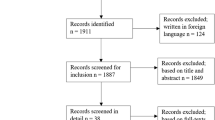Abstract
Multi-user online environments involve millions of participants world-wide. In these online communities participants can use their online personas – avatars – to chat, fight, make friends, have sex, kill monsters and even get married. Unfortunately participants can also use their avatars to stalk, kill, sexually assault, steal from and torture each other. Despite attempts to minimise the likelihood of interpersonal virtual harm, programmers cannot remove all possibility of online deviant behaviour.
Participants are often greatly distressed when their avatars are harmed by other participants’ malicious actions, yet there is a tendency in the literature on this topic to dismiss such distress as evidence of too great an involvement in and identification with the online character. In this paper I argue that this dismissal of virtual harm is based on a set of false assumptions about the nature of avatar attachment and its relation to genuine moral harm. I argue that we cannot dismiss avatar attachment as morally insignificant without being forced to also dismiss other, more acceptable, forms of attachment such as attachment to possessions, people and cultural objects and communities. Arguments against according moral significance to virtual harm fail because they do not reflect participants’ and programmers’ experiences and expectations of virtual communities and they have the unintended consequence of failing to grant significance to attachments that we take for granted, morally speaking. Avatar attachment is expressive of identity and self-conception and should therefore be accorded the moral significance we give to real-life attachments that play a similar role.
Similar content being viewed by others
References
Cranford M. (1996). The Social Trajectory of Virtual Reality: Substantive Ethics in a World Without Constraints. Technology in Society 18(1):79–92
Dibbell, J.D. A Rape in Cyberspace or How an Evil Clown, a Haitian Trickster Spirit, Two Wizards, and a Cast of Dozens Turned a Database Into a Society. Village Voice, 38(51), 1993. Accessed 13 March 2005 at <http://www.english.vt.edu/∼IDLE/assign/bungle/bungle. html|>.
Huff C., Johnson D.G., Miller K. (2003). Virtual Harms and Real Responsibility. IEEE Technology and Society Magazine 22(2):12–19
D. Hunter and F.G. Lastowka. To Kill an Avatar. Legal Affairs July–August 2003. Accessed 12 March 2005 at <http://www.legalaffairs.org/issues/July–August-2003/feature_hunter_julaug03.html>.
C. Kolo and T. Baur. Living a Virtual Life: Social Dynamics of Online Gaming. Game Studies 4(1), 2004. Accessed 17 March 2005 at <http://www.gamestudies. org/0401/kolo/>.
Powers T.M. (2003). Real Wrongs in Virtual Communities. Ethics and Information Technology 5(4):191–198
G. Riva. The Sociocognitive Psychology of Computer-Mediated Communication: The Present and Future of Technology Based Interactions. CyberPsychology and Behavior, 5(6): 581–598, 2002, quoting G. Mantovani. New Communication Environments: from Everyday to Virtual. Taylor & Francis, London, 1996.
J.R. Suler and W. Phillips. The Bad Boys of Cyberspace: Deviant Behaviour in Online Communities and Strategies for Managing it. Accessed 18 April 2005 at <http://www.rider.edu/∼suler/psycyber/badboys.html>
Taylor T.L. (2002). Living Digitally: Embodiment in Virtual Worlds. In: Ralph Schroeder (ed), The Social Life of Avatars: Presence and Interaction in Shared Virtual Environments. London, Springer-Verlag, pp. 400–462
The Daedalus Project. The Psychology of MMORPGS. Accessed 9 March 2006 at http://www.nickyee.com/ daedalus/archives/000514.php
L.-M. Whang and G. Chang. Lifestyles of Virtual World Residents: Living in the On-Line Game “Lineage”. CyberPsychology & Behavior, 7(5): 592–600, 2004
L.-M. Whang, S. Lee and G. Chang. Internet Over-Users’ Psychological Profiles: A Behaviour Sampling Analysis on Internet Addiction. CyberPsychology and Behavior, 6(2): 143–150, 2003
Author information
Authors and Affiliations
Corresponding author
Additional information
A shorter version of this paper was presented at the Cyberspace 2005 Conference at Masaryk University, Brno, Czech Republic
Rights and permissions
About this article
Cite this article
Wolfendale, J. My avatar, my self: Virtual harm and attachment. Ethics Inf Technol 9, 111–119 (2007). https://doi.org/10.1007/s10676-006-9125-z
Published:
Issue Date:
DOI: https://doi.org/10.1007/s10676-006-9125-z




